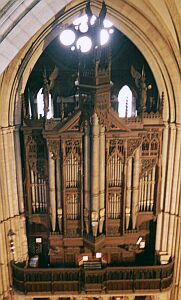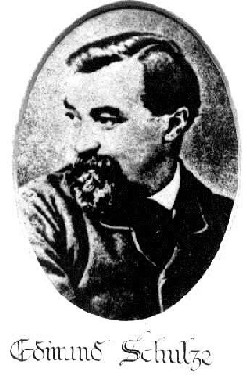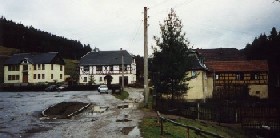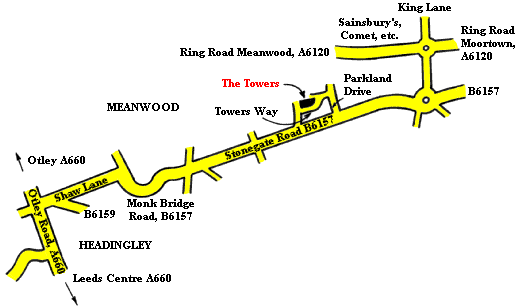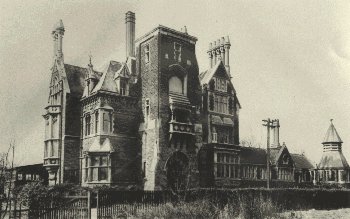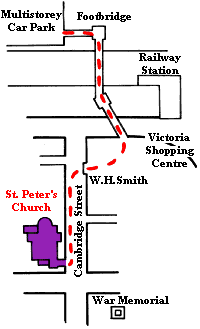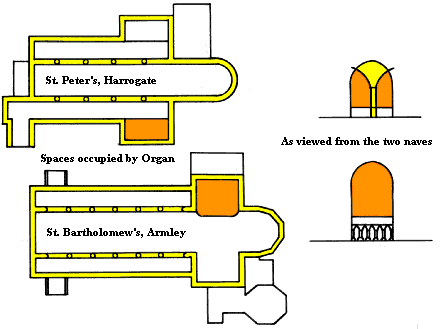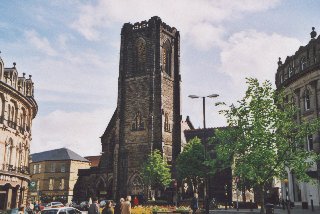|
Harrogate
Harrogate, the second home of the Armley
Schulze, was by the end of the 19th Century a thriving and fashionable spa
town. Nicholas Carter, of Spring Bank in the town, was one of the main developers of Harrogate as a spa, and it was his two
daughters who purchased the Organ from Mr.Kennedy. Over 80 springs provided the town with its main attraction, now a
thing of the past, surviving at present only in museum form. (Currently there are plans to restore them to their original
glory.) Since the middle of the 20th Century Harrogate has taken off as a major conference
centre, along with its
horticultural connections. It hosts the renowned annual flower show in the near-by grounds of the Great Yorkshire Show.
From Leeds, the popular view of Harrogate is one of superior company, or more to the point 't'folk theer are nobbut stuck
up'. Certainly, in the period when our Organ was moving around the County, it was the haunt of the select.
St. Peter's, where the Organ
rested briefly, is a very
attractive town centre church, built in 1876. It is happily able to boast
the fact that it is open every day, so there
is little |
restriction to visiting what turned out to be Edmund Schulze's last organ
(the replacement for the one bought for Armley). However, the instrument can hardly now be labelled as the work of
Schulze, as it has been considerably altered over the years by various builders, especially in 1952 when it underwent a
major re-build, during which they 'used some old pipework, but also took the opportunity to extend the instrument'*. In 1986
they even had two electronic 32 foots added, stepping even further away from the Schulze recipe! As a contemporary,
St.Peter's could hardly be more different from the Church at Armley, and a visit makes it obvious that in terms of organ
design, what suited one could hardly sound right in the other. The visitor should also note that Schulze was obliged to install
the Meanwood organ in the wide but stunted South Transept of St. Peter's, making it remote from the main body of the
Church. It's replacement commands a much better position in the former vestry area to the south of the chancel.
|
* From the current organ leaflet on display in and available from
St.Peter's.
|
|

